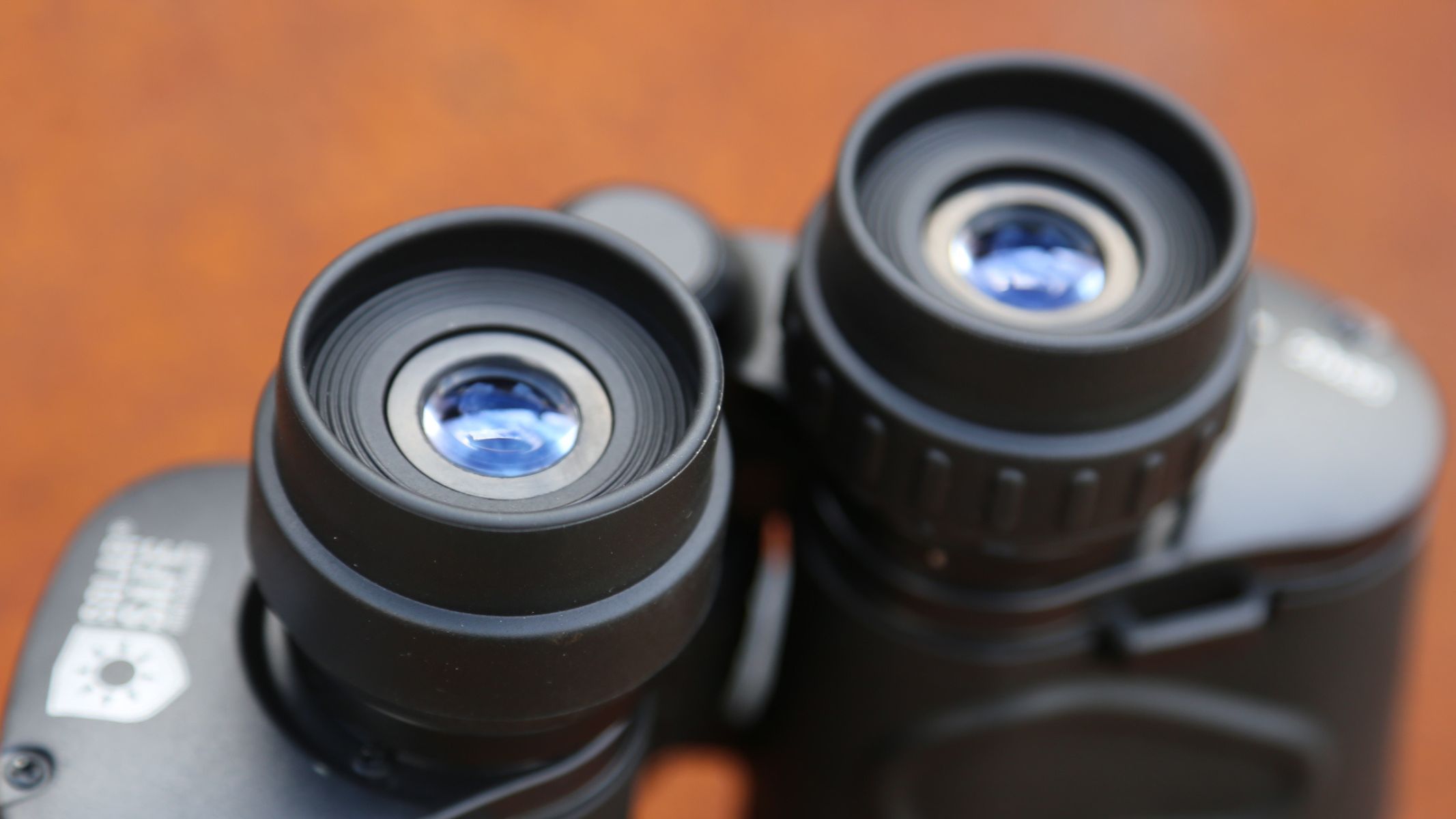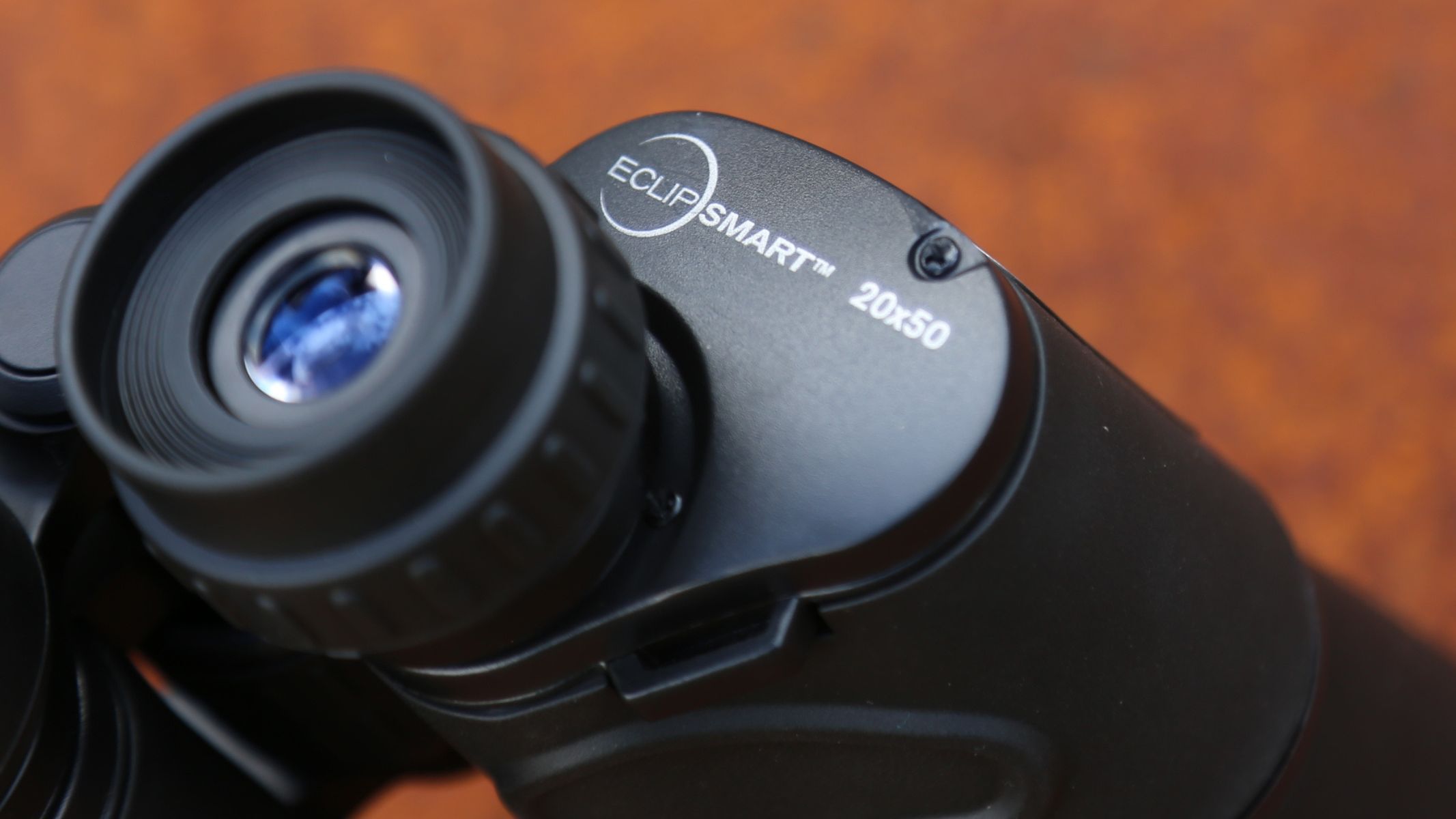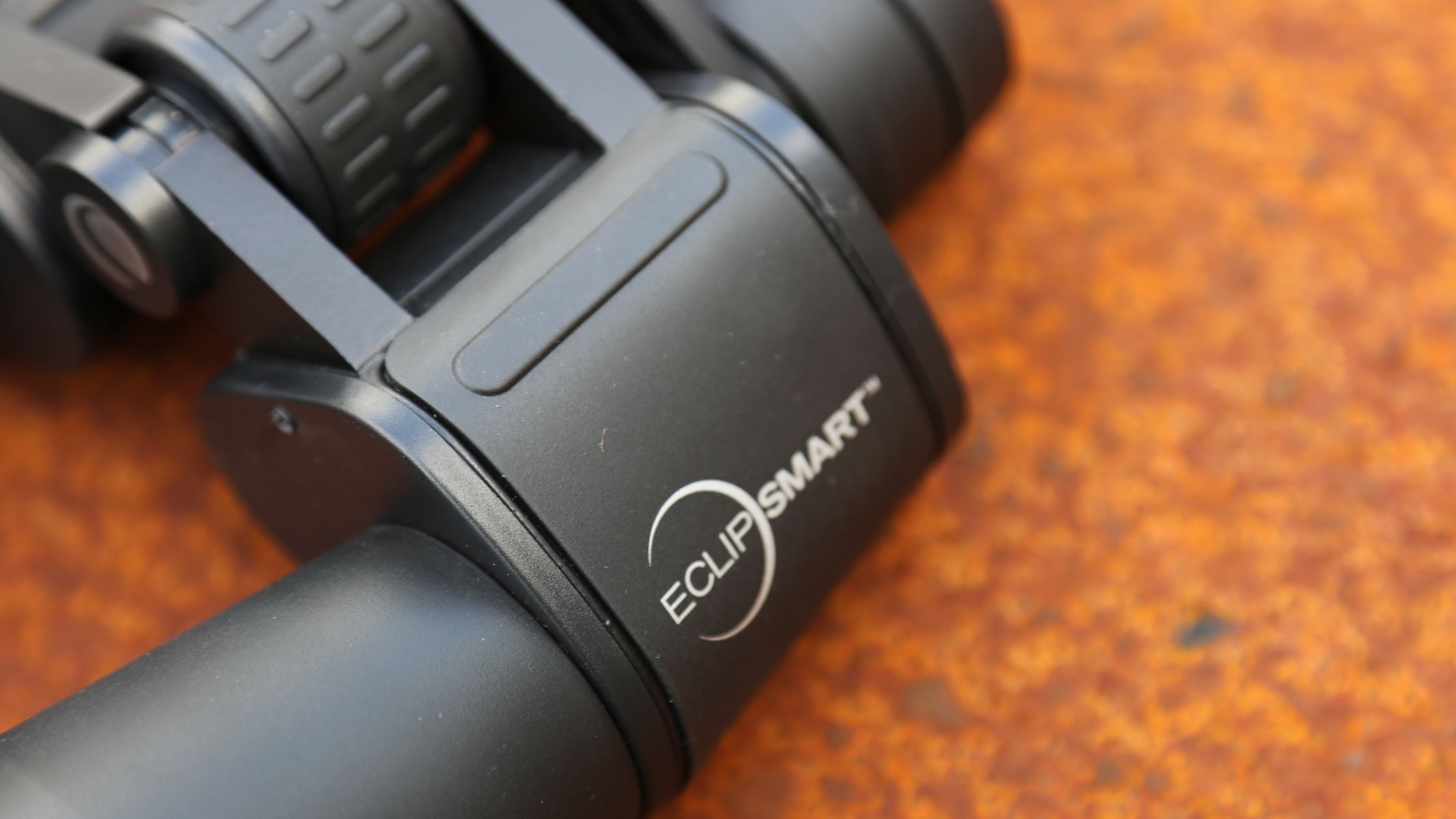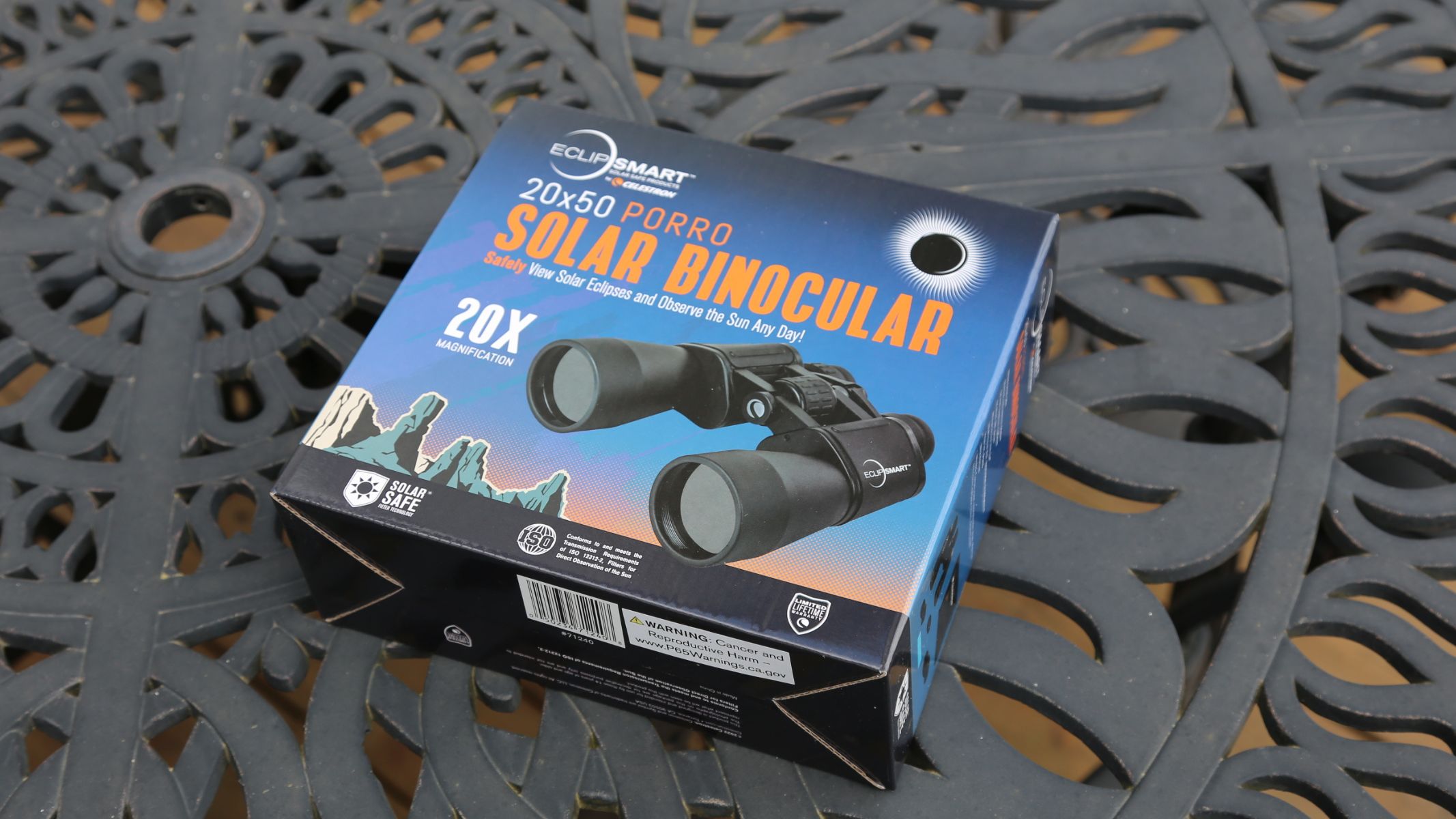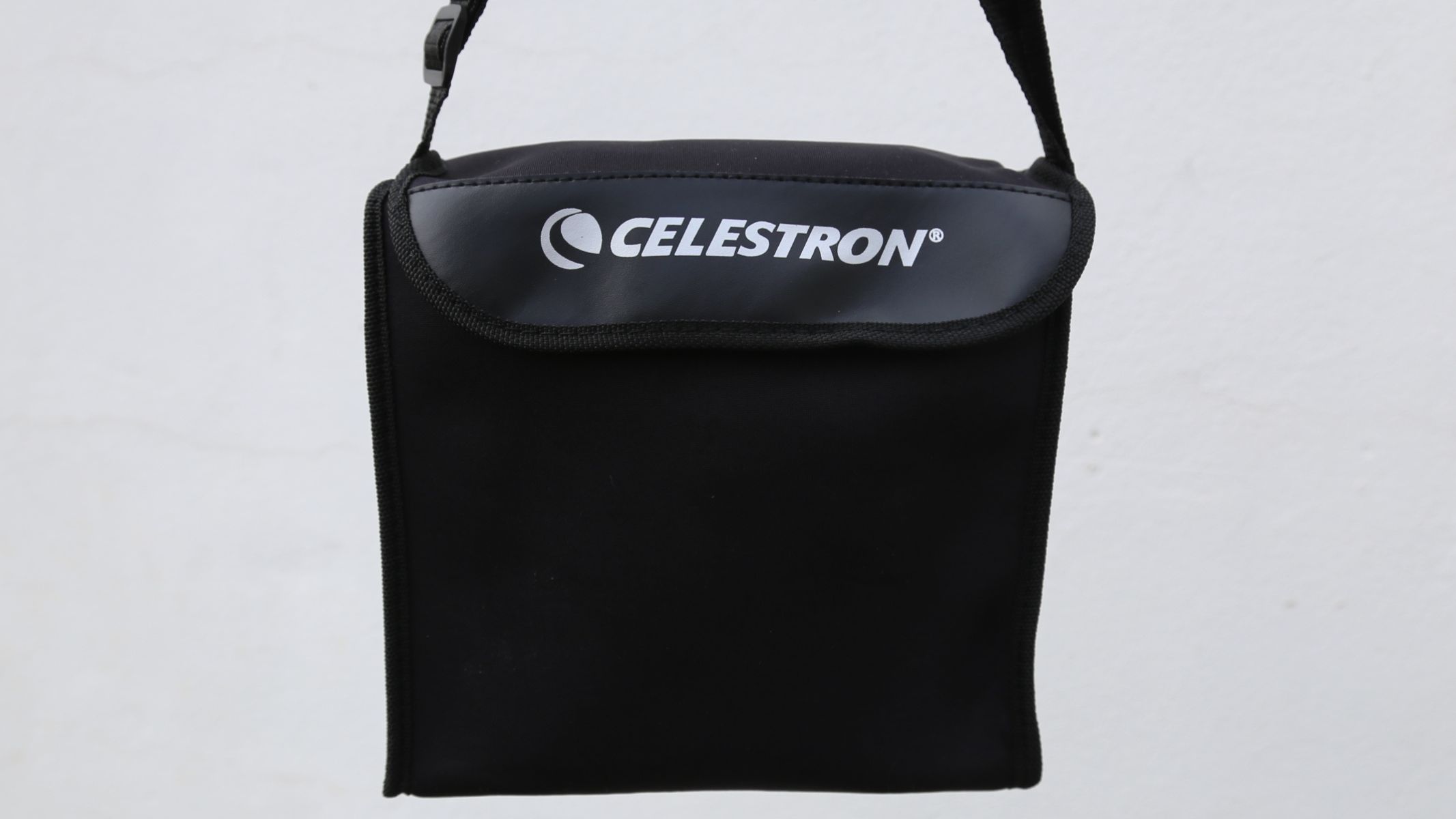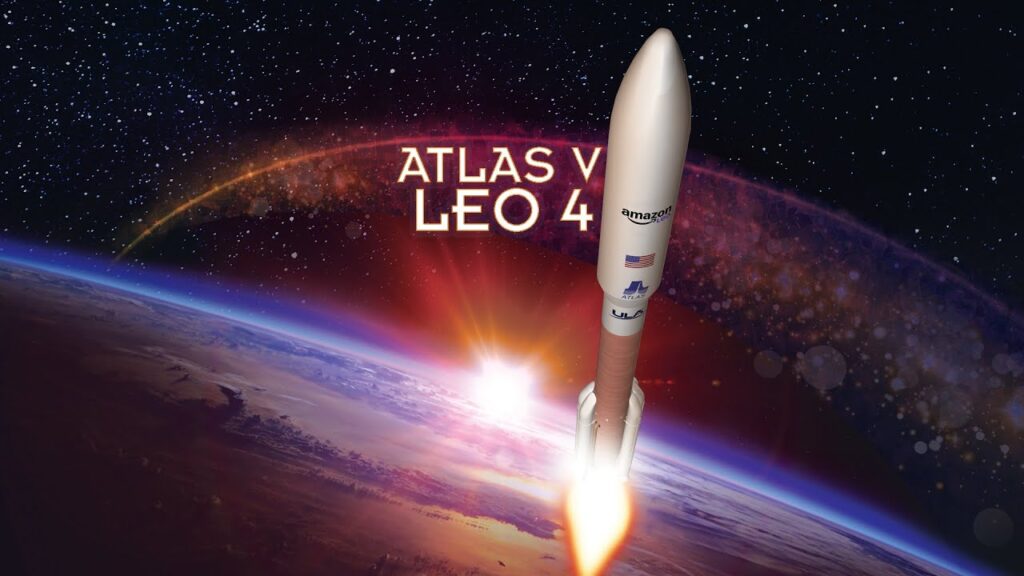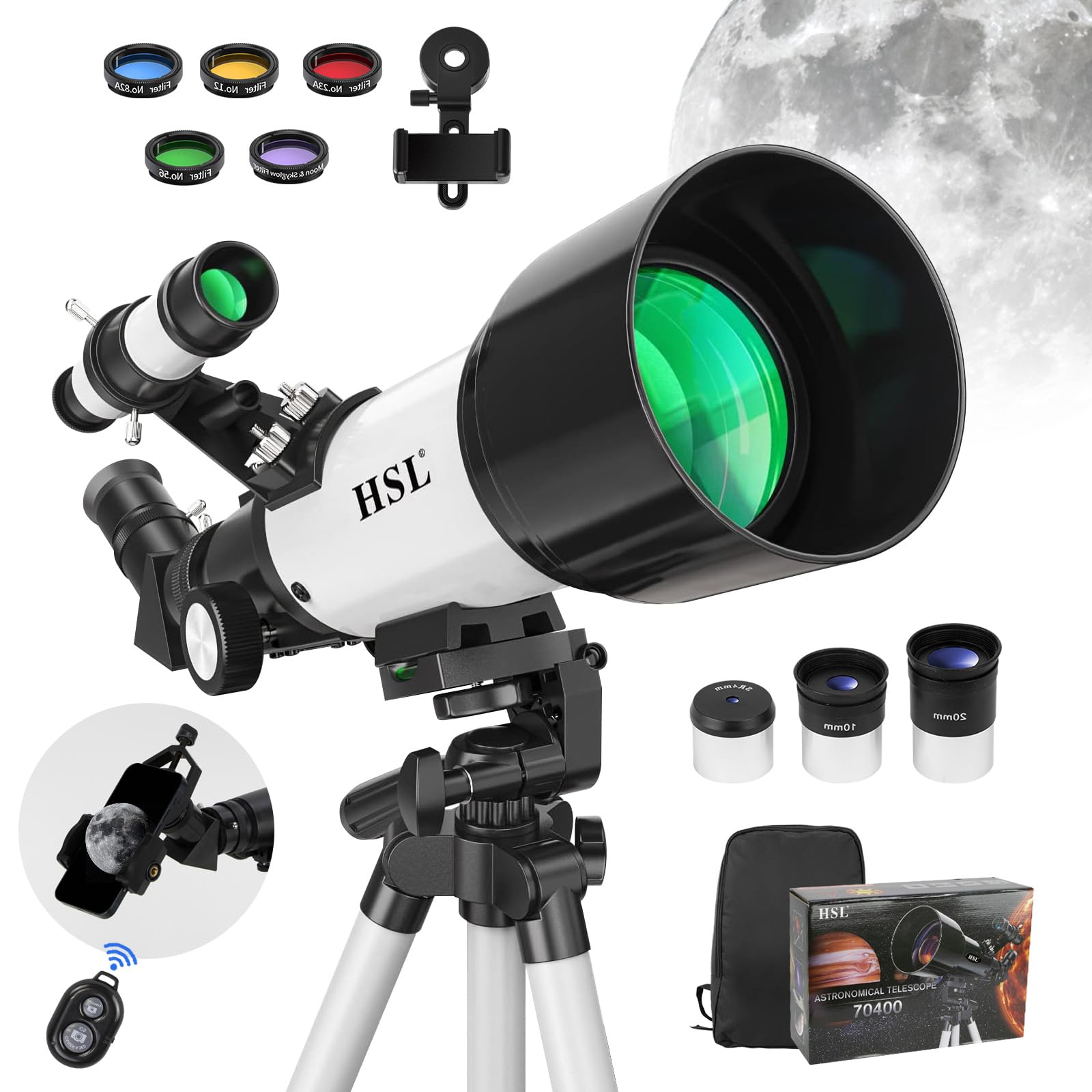Now Reading: Celestron EclipSmart 20x50mm Porro solar binoculars review
-
01
Celestron EclipSmart 20x50mm Porro solar binoculars review
Celestron EclipSmart 20x50mm Porro solar binoculars review
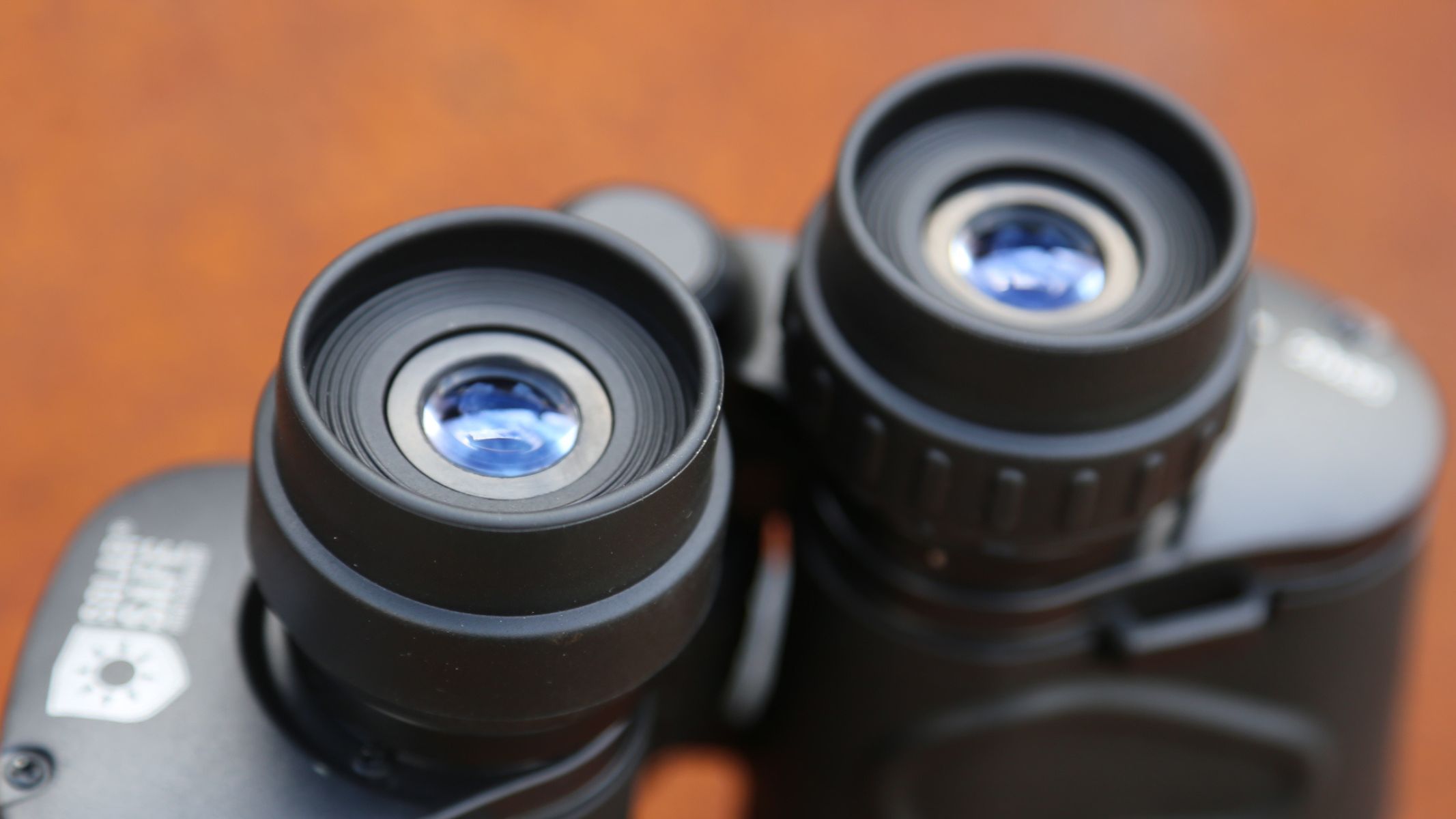
Specifications
Optics: BK-7
Solar filter: White-light solar filter (ISO 12312-2:2015(E))
Design: Porro prism
Magnification: 20x
Objective lens diameter: 50 mm
Waterproof/fog-proof: Water resistant
Eye relief: 8 mm
Weight: 1.96 pounds (892 grams)
Dimensions: 7.8 x 2.6 x 7.3 inches (199 x 65 x 186 mm)
Observing the sun requires great care, but also serious magnification. Equipped with 20x magnification, the Celestron EclipSmart 20x50mm Porro solar binoculars are primed for observing sunspots — magnetic disturbances on the sun’s surface that can be as big as Earth — at any time. However, as their name suggests, these binoculars are also designed to make it simple and safe to view the sun’s disk as the moon blocks it during a solar eclipse.
The Celestron EclipSmart 20×50 Porro solar binoculars offer the highest magnification of any solar binoculars on the market. With 20x magnification and 50mm objective lenses, they’re in a class of their own. However, there are some characteristics buyers need to be aware of. For example, these binoculars are based on the rather old-fashioned Porro prism optical design — a bulkier, heavier, but more affordable way to correct the inverted image. This design makes the binoculars larger and more difficult to hold steady.
That said, their narrow field of view is the main issue because it makes it challenging to find the sun. However, if they’re used carefully and mounted on a tripod, the Celestron EclipSmart 20x50mm Porro solar binoculars can impress. If you do that, you have a great-value and impressive setup for watching solar eclipses and sunspots, without the need for removable solar filters.
Celestron EclipSmart 20x50mm Porro solar binoculars: Design
★ ★ ★½
- Porro prism design with large objective lenses
- Tripod jack for steady views
- Loose-fitting lens caps
What’s instantly apparent about the Celestron EclipSmart 20×50 binoculars is their size. Compared with a pair of compact roof prism binoculars (which are essentially just two barrels), the Celestron EclipSmart 20×50 binoculars follow a classic Porro prism design, meaning they’re bulky but more affordable. It’s the reason for both the Celestron EclipSmart 20×50’s low price and its hefty weight. At 1.96 pounds (892 grams), these binoculars are difficult to hold steady for long periods, introducing problems for their performance. (We’ll explain more about this issue below.)
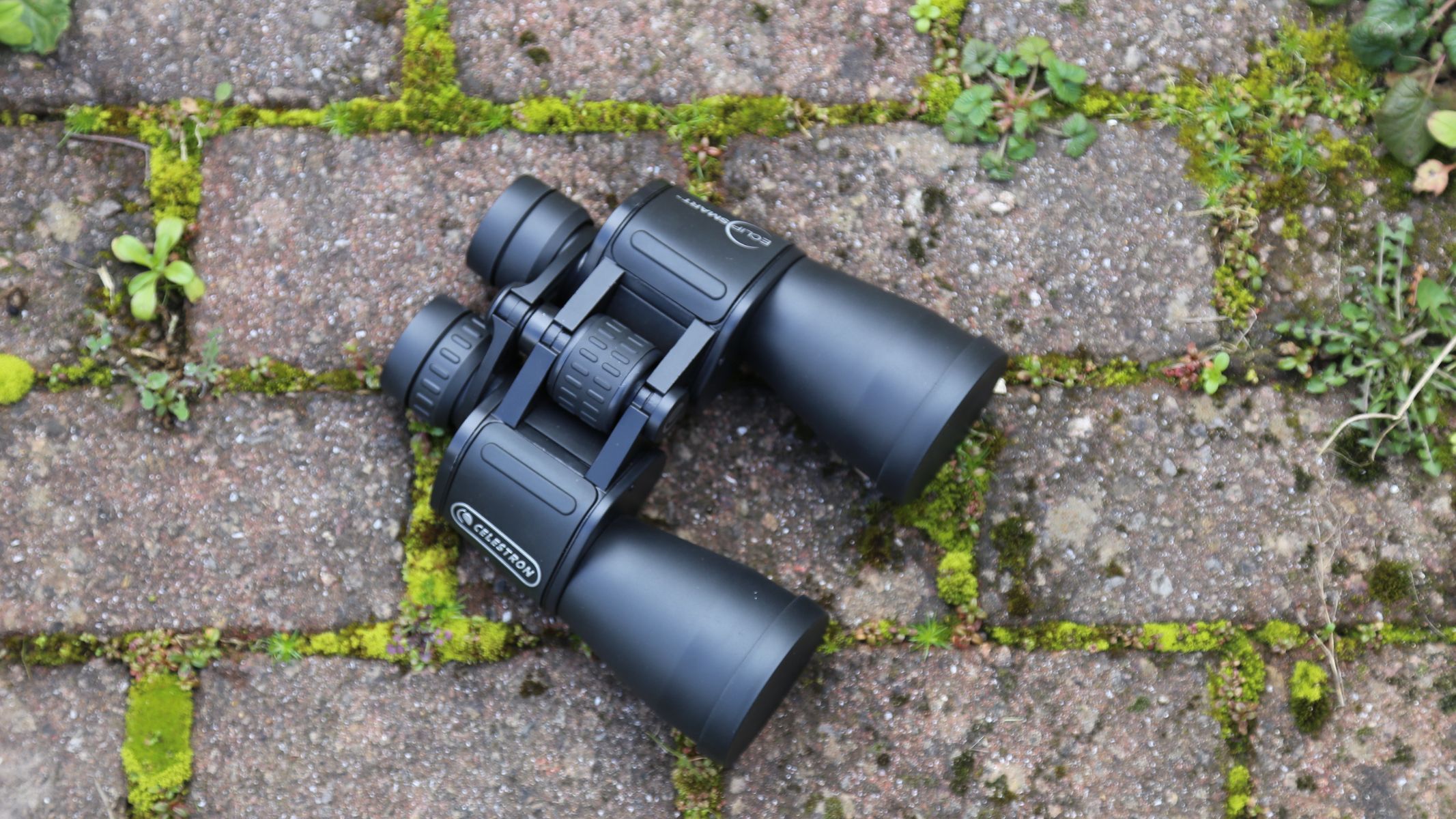
The standout feature of the Celestron EclipSmart 20x50mm Porro solar binoculars is their high power. At 20x magnification, the sun looks much larger in the field of view than in any other solar binoculars on the market, while the large objective lenses are standard for astronomy binoculars. Despite having built-in white-light solar filters, which block all of the sun’s ultraviolet and infrared light and 99.99999% of its visible light, these objective lenses ensure that the image of the sun is bright and detailed.

Although the Celestron EclipSmart 20×50 binoculars’ build quality is good (if rather basic and plasticky), the accessories are poor. The lens caps aren’t attached, so they’re easy to lose. Meanwhile, the included shoulder bag and neck strap are of rudimentary quality. There is, of course, one vital accessory that’s missing: an L-type adapter that would have allowed the Celestron EclipSmart 20×50 to be fitted to a standard photographic tripod. That’s such a must-have extra purchase that, arguably, it should be included with this product.
Celestron EclipSmart 20x50mm Porro solar binoculars: Performance
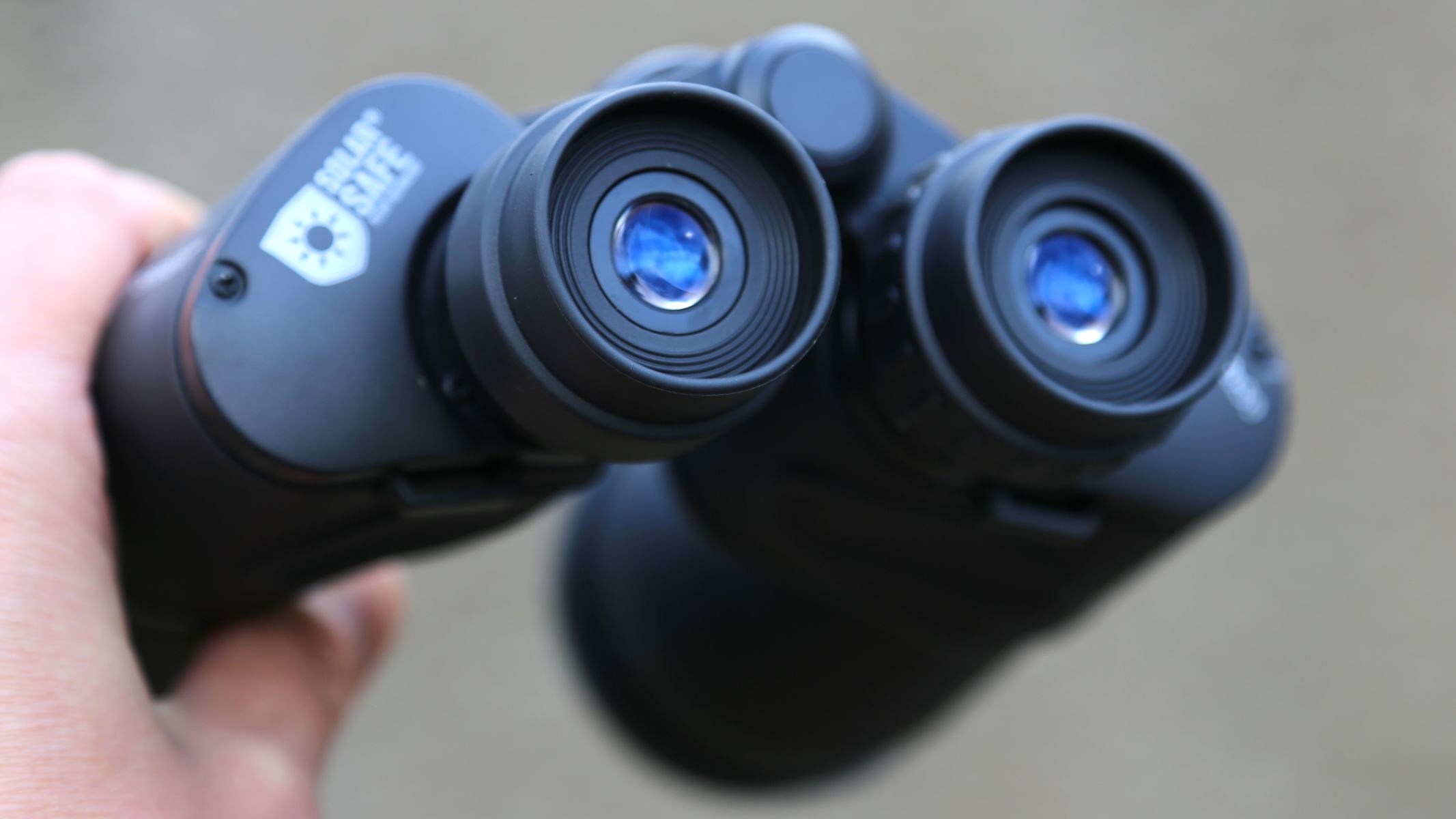
★ ★ ★ ★
- High-magnification sunspot viewing
- Difficulty locating the sun without a tripod
- No noticeable color fringing
If you want to look at the sun in as much detail as possible and you don’t want to buy a solar telescope, the Celestron EclipSmart 20×50 could be for you. However, there are plenty of caveats to consider before you purchase it. If used properly, the Celestron EclipSmart 20x50mm Porro solar binoculars offer some of the most detailed views of the solar surface you can get from a pair of solar binoculars.
However, finding the sun can be tricky because of the Celestron EclipSmart 20×50’s narrow field of view. At 20x magnification, it’s challenging to locate the sun, which covers only 1 degree of the sky, largely due to its built-in solar filters, which block all light except that of the sun. It means that even if you’re pointing the binoculars very close to the sun, you won’t see it; your aim (in an otherwise dark sky) must be perfectly accurate for the sun to be in your field of vision.
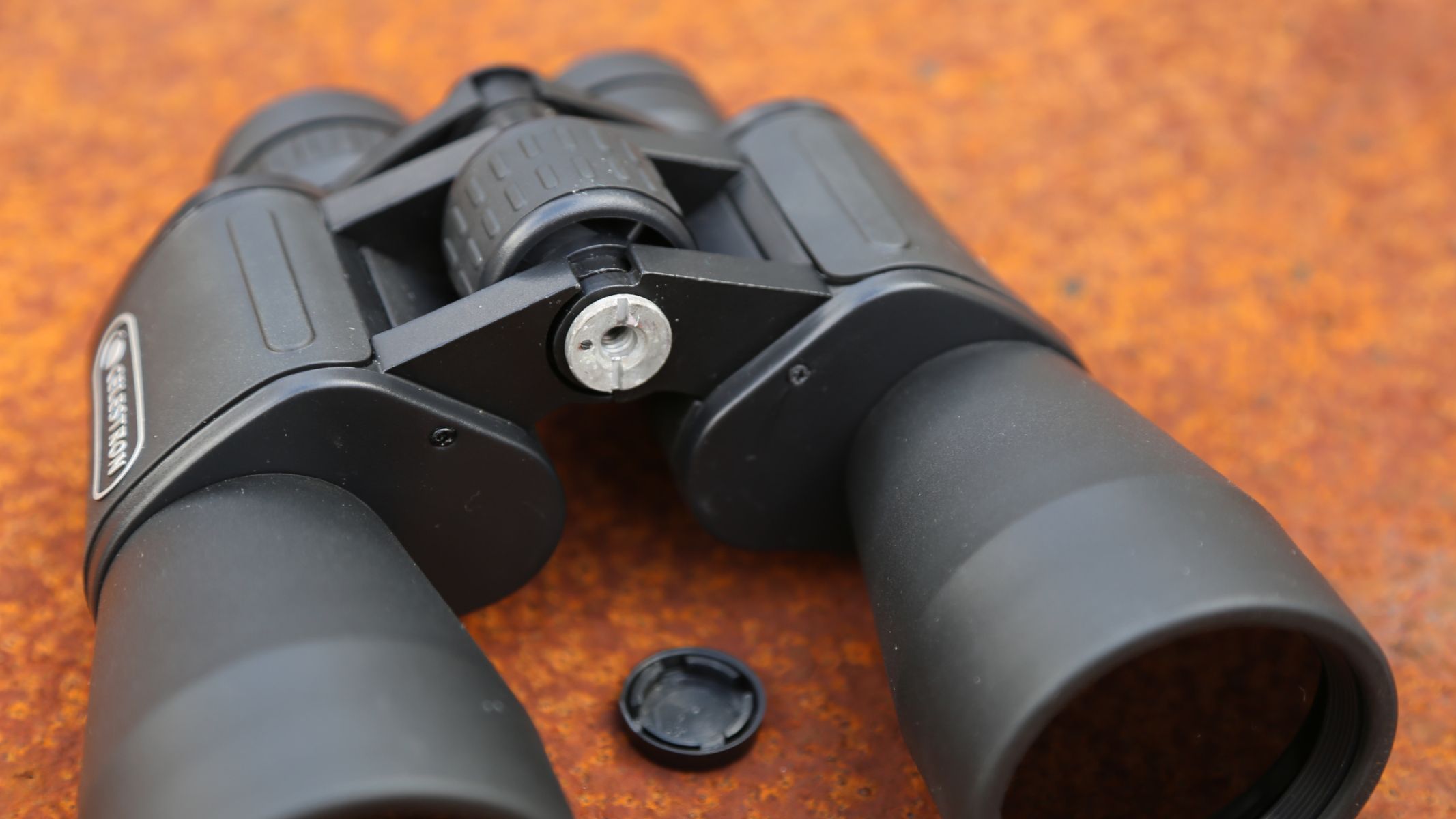
This is why a tripod is, in our view, an essential accessory for the Celestron EclipSmart 20×50. Only with an L-shaped adapter screwed in place between the objective lenses and attached to a tripod is it easy to fine-tune the positioning and enjoy a rock-steady view.
If you do that, the Celestron EclipSmart 20×50 mm Porro solar binoculars impress. Sunspots appear reasonably clearly defined against a bluish-white solar disk, and there’s no hint of color fringing nor blue or yellow halos around the sun. The Celestron EclipSmart 20×50 binoculars are enjoyable to use, but only with a tripod. If used handheld, these binoculars will make it frustrating to locate your target and result in shaky, underwhelming views.
Celestron EclipSmart 20x50mm Porro solar binoculars: Functionality
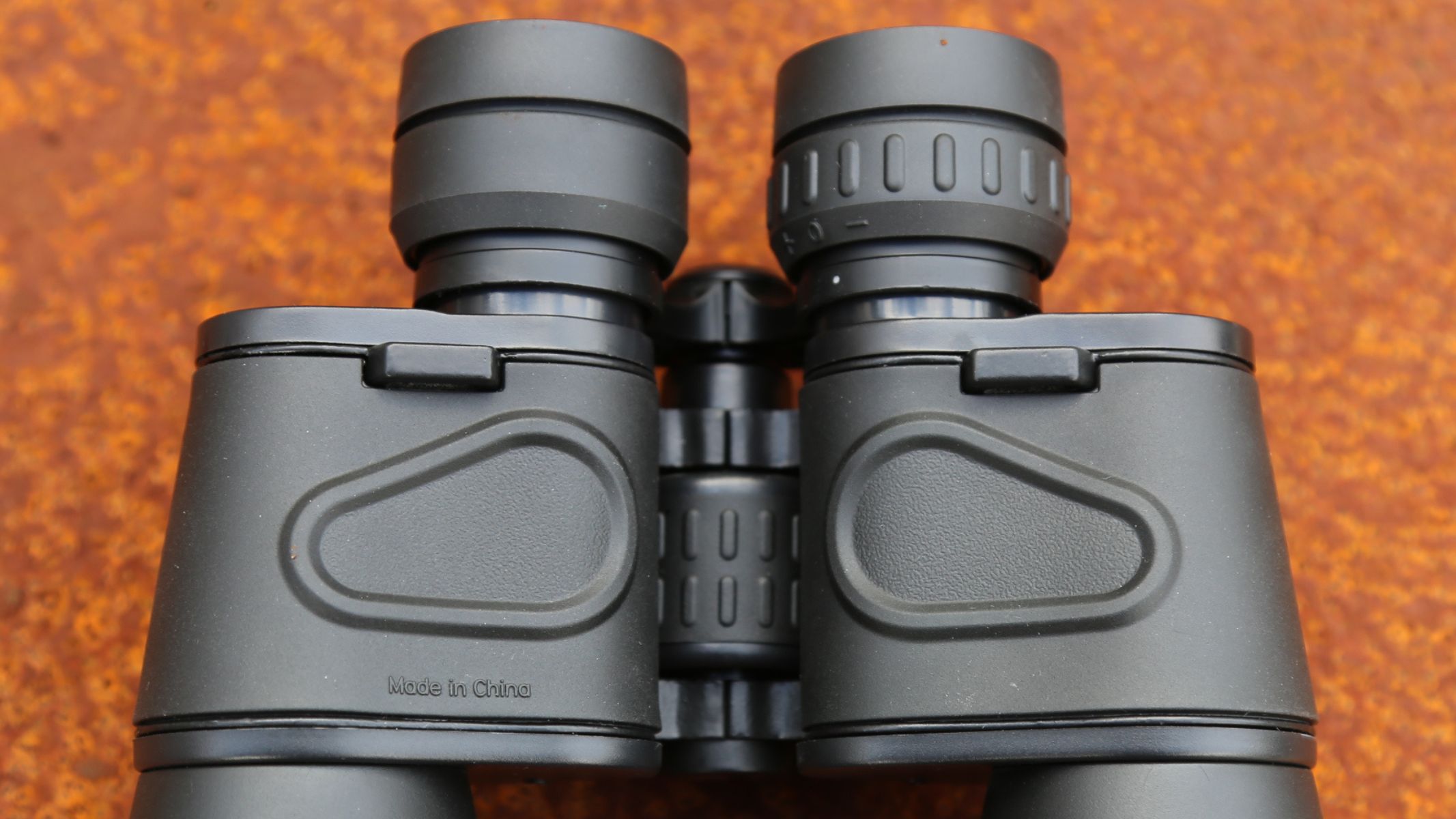
★ ★ ★½
- Easy use with a tripod
- Thumb pads for a secure grip
- Challenges with handheld use
The Celestron EclipSmart 20x50mm Porro solar binoculars have some nice design touches, such as thumb pads on the undercarriage and a focus knob that has enough resistance to stay in position. But, as we’ve said, it is extremely difficult to keep the image steady without a tripod at this power level.
That creates issues with focusing. As with all binoculars, it’s so important to set them up for your own vision. But the narrow field of view and the built-in solar filters on the Celestron EclipSmart 20×50 don’t make that easy. After all, it’s not like you can aim at anything other than the sun.
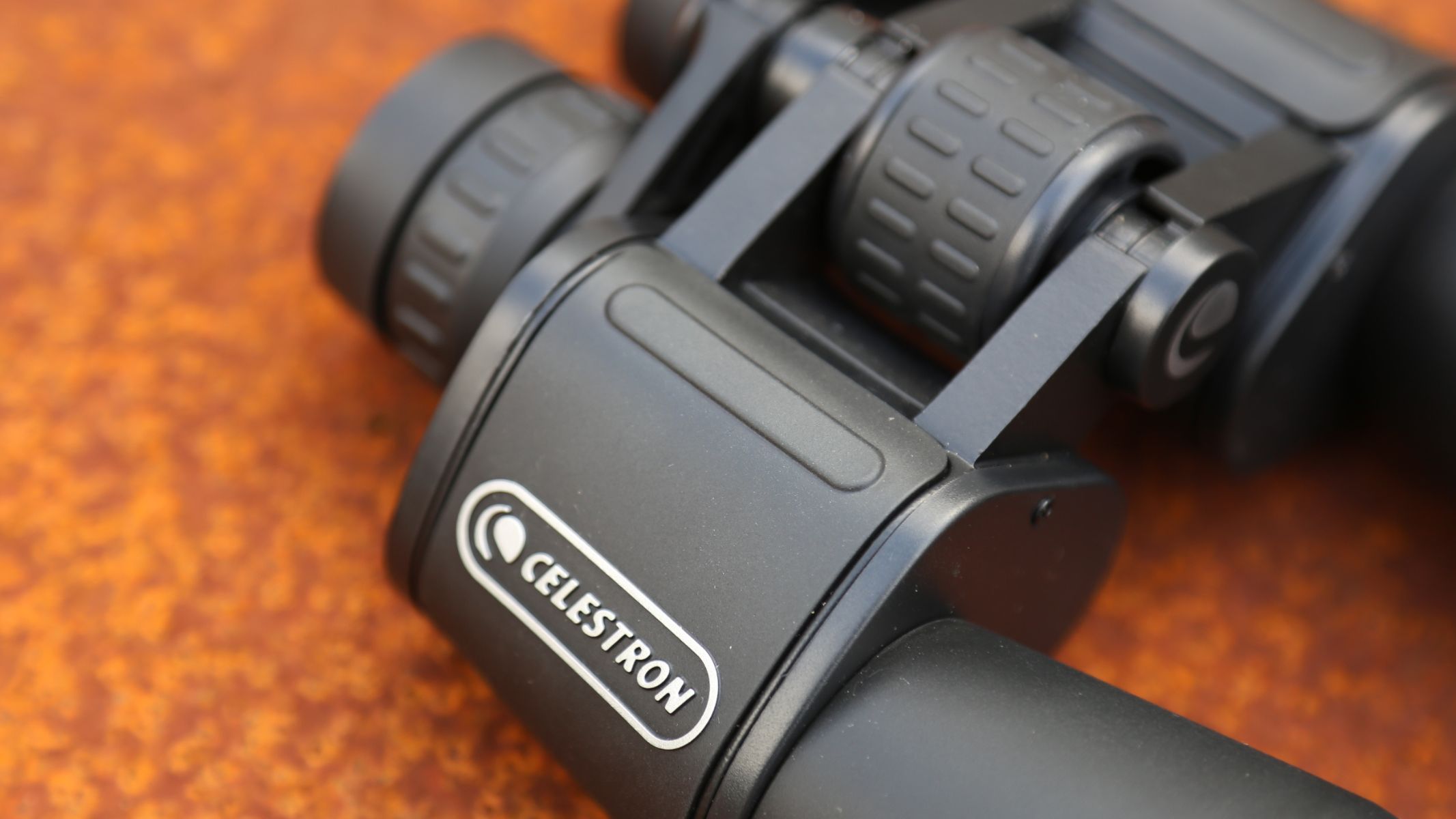
The best way to set up the Celestron EclipSmart 20×50 is to attach it to a tripod. After you get the sun in the field of view, which can take a little time, cover your right eye and turn the focus wheel until sunspots look sharp for your left eye. Then, cover your left eye and adjust the (slightly too stiff) diopter on the right eyecup until the sunspots look sharp for your right eye. It’s kind of a pain, but it’s worth it.
In conclusion, if you’re looking for handheld solar binoculars, this is not the pair for you. Buy the Celestron EclipSmart 20x50mm Porro solar binoculars only if you’re OK with mounting them on a tripod. The prize is excellent-value solar close-ups in a reasonably portable package.
Celestron EclipSmart 20x50mm Porro solar binoculars: User reviews
The Celestron EclipSmart 20x50mm Porro solar binoculars get good feedback from users, who typically love the clarity and think the binoculars are affordable, lightweight and well constructed. “The sun looks white through these, which is good for seeing sunspots,” one review says.
Buyers had a lot to say about the Celestron EclipSmart 20×50’s usability. “Finding the sun can be a challenge, but if you start with your eyes looking right below it, bring them up, THEN look at the sun, it’s quite easy,” one reviewer wrote. Another reviewer said, “I would recommend the tripod mount and a tripod as it can be a bit tricky to locate the sun looking through, but once it’s in view, it’s awesome! The only real downfall is all the plastic.”
How we tested the Celestron EclipSmart 20x50mm Porro solar binoculars
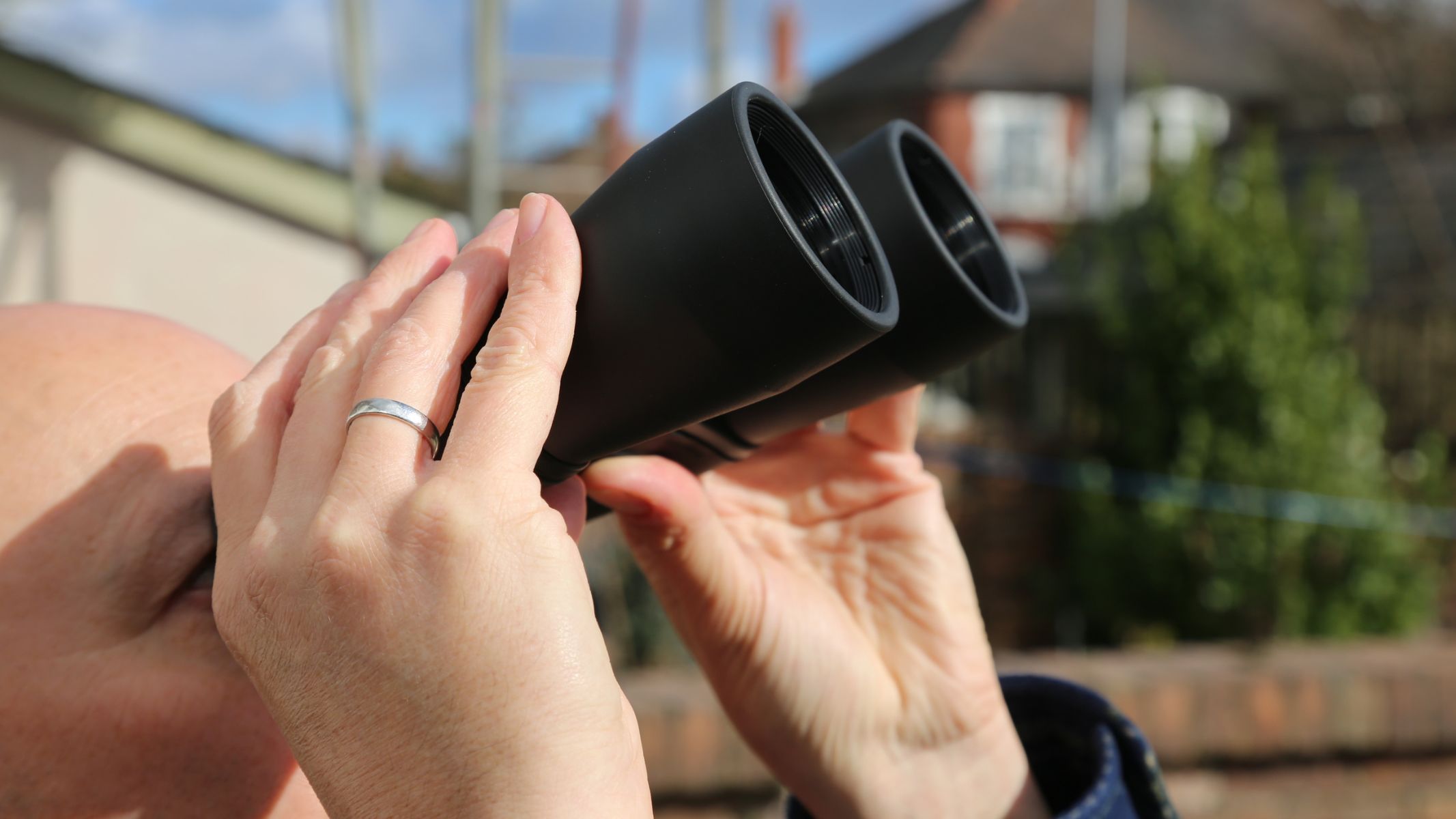
We tested the Celestron EclipSmart 20x50mm Porro solar binoculars under clear daytime conditions, trying both handheld and tripod-mounted setups. During an early-morning session, we examined active sunspot regions, of which there were plenty, but quickly realized that hand-holding was not getting good results.
During a second observation session later in the day, we mounted the Celestron EclipSmart 20×50 on a tripod, which made it much easier to evaluate the image quality. Our observations showed sharp solar detail with minimal glare and zero color issues. We concluded that the tripod mount significantly improved usability.
Should I buy the Celestron EclipSmart 20x50mm Porro solar binoculars?
Buy them if:
✅ You want high-power views of the solar surface.
✅ You have a tripod or don’t mind using one for solar viewing.
Don’t buy them if:
❌ You want handheld solar binoculars; the field of view makes them too wide to aim easily
❌ You need a more portable, travel-friendly option that doesn’t require extra gear.
If you’re okay with using a tripod — and buying a tripod adaptor — these big binoculars will impress. With a huge 20x magnification, the close-up solar views on offer are unmatched by competitors, but with great power comes great shakiness if you hand-hold them. It also means a tight field of view that’s so narrow that finding the sun can be difficult. Mounted properly, however, the Celestron EclipSmart 20x50mm is an affordable, high-magnification solar setup that rivals small telescopes.
If the Celestron EclipSmart 20x50mm Porro solar binoculars aren’t for you
The Celestron EclipSmart 20x50mm Porro solar binoculars are best for serious solar observers who don’t mind using a tripod, but casual eclipse chasers may prefer something more portable. In that case, it’s worth seriously considering the less-expensive Celestron EclipSmart 12x50mm Porro solar binoculars, which offer a better balance between magnification and portability.
For something higher-end, go straight to the Lunt SunOculars 8×32, a more compact, handheld-friendly option with superior build quality. However, the Lunt SunOculars 6×30 mini solar binoculars are the ultimate budget-friendly choice, though they offer far less magnification and have a more basic build quality.
Still not sure? Discover more of the best solar binoculars we recommend, tested and rated. Or if binoculars aren’t your thing, we’ve also rounded up the best solar viewing equipment, including telescopes, solar glasses and more.
Stay Informed With the Latest & Most Important News
Previous Post
Next Post
-
 012024 in Review: Highlights from NASA in Silicon Valley
012024 in Review: Highlights from NASA in Silicon Valley -
 02Panasonic Leica Summilux DG 15mm f/1.7 ASPH review
02Panasonic Leica Summilux DG 15mm f/1.7 ASPH review -
 03From Polymerization-Enabled Folding and Assembly to Chemical Evolution: Key Processes for Emergence of Functional Polymers in the Origin of Life
03From Polymerization-Enabled Folding and Assembly to Chemical Evolution: Key Processes for Emergence of Functional Polymers in the Origin of Life -
 04How New NASA, India Earth Satellite NISAR Will See Earth
04How New NASA, India Earth Satellite NISAR Will See Earth -
 05And Thus Begins A New Year For Life On Earth
05And Thus Begins A New Year For Life On Earth -
 06Astronomy Activation Ambassadors: A New Era
06Astronomy Activation Ambassadors: A New Era -
07SpaceX launch surge helps set new global launch record in 2024


